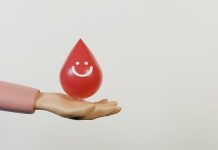
To comprehend this story, let’s begin with DNA – it’s like the blueprint that instructs our bodies on how to function.
Within our DNA, there are genes that provide precise instructions for everything in our body, from eye color to height.
DNA comes in two forms: coding DNA and non-coding DNA. Think of it as a recipe book where coding DNA represents the recipes you use, and non-coding DNA is the blank space in between.
For a long time, scientists believed that this empty space, or non-coding DNA, served no significant purpose. They even coined the term “junk DNA.”
Now, let’s shift our focus to blood pressure – it’s the force of blood pushing against blood vessel walls. Prolonged high blood pressure, known as hypertension, can lead to heart problems and affects over a billion people worldwide.
The Mission: Deciphering the Mystery of “Junk DNA”
Recently, researchers at Canada’s SickKids Hospital decided to investigate non-coding DNA, suspecting that, while it might not offer direct instructions like coding DNA, it could still be vital.
Led by scientist Dr. Philipp Maass, the team explored non-coding DNA’s potential connection to blood pressure.
The Clues: Variants and Blood Pressure
Their investigation yielded intriguing findings. They identified small alterations in non-coding DNA, called ‘variants,’ that appeared linked to high blood pressure – almost like discovering hidden notes within our recipe book’s empty pages!
Convinced these variants in non-coding DNA might influence genes related to blood pressure, the scientists delved deeper.
The Investigation: Examining Countless Variants
Using a tool called a massively parallel reporter assay (MPRA), they scrutinized over 4,600 variants in non-coding DNA – an extensive detective effort!
Despite non-coding DNA’s inability to produce proteins like coding DNA, the scientists uncovered that many of the variants they studied were situated near genes associated with blood pressure regulation.
This suggests that non-coding DNA could function like a volume control, influencing these genes to be more or less active.
The Results: A Blueprint of Blood Pressure Regulation
After rigorous work, the scientists unearthed numerous clues within non-coding DNA that might impact blood pressure.
It’s akin to crafting a map of concealed notes that orchestrate genes governing blood pressure within our recipe book.
This map isn’t solely a boon for comprehending blood pressure but can also serve as a guide for investigating other aspects of our bodies, such as growth or susceptibility to diseases.
The Future: Tailored Healthcare
The SickKids research team is enthusiastic about their discovery and envisions it as a step toward ‘Precision Child Health.’ This term means providing each person with care tailored specifically to them.
Knowledge about these variants might help doctors predict who could develop high blood pressure and offer early intervention.
Ultimately, the team demonstrated that even segments of our DNA once dismissed as “junk” may harbor essential secrets about our health. It’s a reminder that things initially perceived as insignificant can turn out to be remarkably important.
For those concerned about blood pressure, consider reading studies on how diets can help reduce high blood pressure and the benefits of consuming 3 grams of omega-3s daily in managing blood pressure.
For further insights into nutrition, explore recent research on how beetroot juice can lower blood pressure and how cinnamon may help reduce high blood pressure.
This study was published in Cell Genomics.
If you care about high blood pressure, please read studies about unhealthy habits that may increase high blood pressure risk, and drinking green tea could help lower blood pressure.
For more information about high blood pressure, please see recent studies about what to eat or to avoid for high blood pressure, and 12 foods that lower blood pressure.
Copyright © 2023 Knowridge Science Report. All rights reserved.



